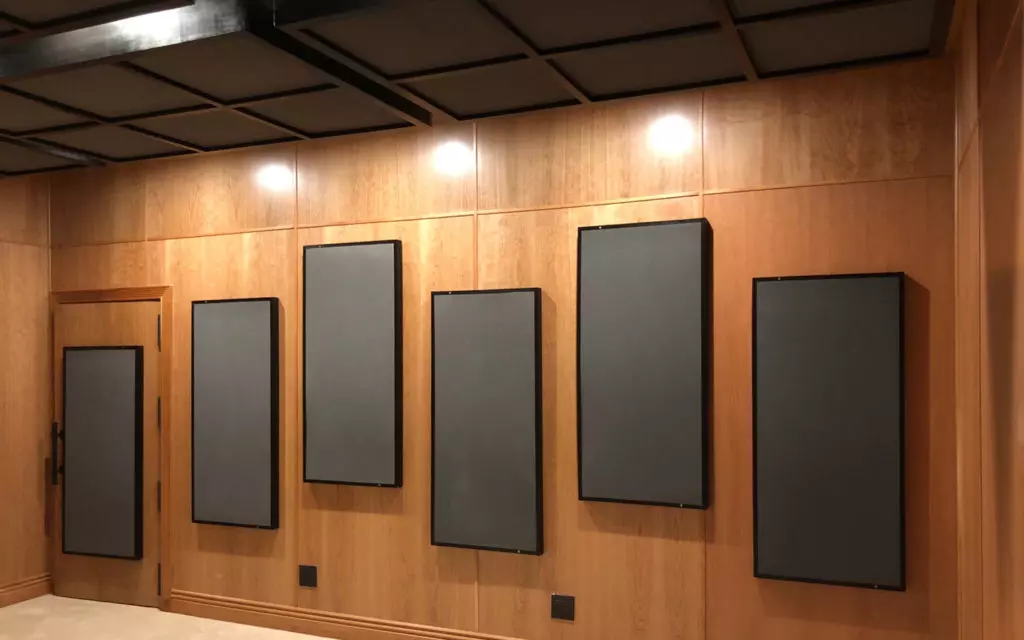
Acoustic panels serve a vital role in enhancing the sound quality of a space. They are particularly useful in recording studios, home theaters, offices, and anywhere where controlling sound reflection is essential.
This article will guide you through the process of installing acoustic panels on walls, ensuring that you can effectively manage sound in your chosen environment.
Understanding Acoustic Panels and Their Importance
Before delving into the installation process, it’s essential to understand what acoustic panels are and why they are important. Acoustic panels are specially designed to absorb sound waves, reducing reverberation and echo in a room.
They are made from sound-absorbing materials like foam or fiberglass. These panels are not only functional but can also be aesthetically pleasing, contributing to the interior design of a space.
The importance of acoustic panels lies in their ability to create a controlled sound environment. In a recording studio, for example, they prevent sound reflections from muddying the recording quality. In an office, they can reduce noise levels, making it easier for employees to concentrate.

Choosing the Right Acoustic Panels
Selecting the right ones is crucial. The choice depends on the specific needs of the room and the type of sound control required. Factors to consider include the size of the room, the type of activities conducted there, and the existing decor.
There are various types of acoustic panels available, such as foam, fabric-wrapped fiberglass, and wooden acoustic panels. Each type has its unique properties and aesthetics.
Planning and Preparing for Installation
Before installing them, proper planning is essential. This involves determining the number of panels needed and their placement. The goal is to achieve a balance between sound absorption and the aesthetics of the room.
Start by identifying the areas of the wall that reflect the most sound, often known as the first reflection points. These are usually located opposite the sound source.
Preparing the room for installation involves cleaning the walls and ensuring they are smooth and free of debris. If necessary, repaint the walls and allow them to dry completely before proceeding.
Tools and Materials Needed
Gather all the necessary tools and materials before starting the installation. You will need a measuring tape, a level, a pencil, adhesive (specific to the type of panels you are using), and possibly a drill and screws if your panels require a more secure attachment.
It’s also wise to have a ladder or a stool handy for reaching higher spots on the wall.

The Installation Process
The installation process varies depending on the type of acoustic panels and the method of attachment. Most of these can be installed using an adhesive, which is simple and effective for lightweight foam panels. For heavier materials, like those made of fiberglass, a combination of adhesive and mechanical fasteners (like screws) may be necessary.
- Marking and Measuring: Use your measuring tape and level to mark the positions where the panels will be placed. Ensure that the panels are evenly spaced and aligned.
- Applying Adhesive: If using adhesive, apply it to the back of the panel in a generous amount. Some of them come with a peel-and-stick backing, which makes this process even simpler.
- Attaching the Panels: Carefully place the panel against the wall in the predetermined position. Press firmly for a few minutes to ensure a strong bond. If using screws, drill pilot holes first and then secure the panel with the screws.
Finishing Touches and Maintenance
Once all of them are installed, step back and examine the room from different angles to ensure everything is aligned and looks aesthetically pleasing. If any adjustments are needed, it’s best to make them immediately.
Maintaining acoustic panels is straightforward. Regular dusting and vacuuming are usually sufficient to keep them clean. For fabric-wrapped panels, a lint roller can be handy.
Well-maintained ones can last for years, making them a cost-effective solution for long-term sound management and interior design enhancement.
Evaluating the Acoustic Improvement
After installing them, it’s important to evaluate the acoustic improvement in the room. This can be done by conducting a simple sound test, such as clapping or playing music, and listening for changes in the echo and reverberation.
The difference should be noticeable, with a clearer and more controlled sound.

Room Layout Considerations
When installing acoustic panels, the layout of the room plays a pivotal role. Consider factors like the size of the room, the location of windows, doors, and furniture, as well as the room’s primary use.
The layout will influence where sound reflections occur and thus where panels should be placed for optimal effect.
Also, consider the aesthetic aspect, ensuring that the panels complement the room’s design. Proper layout planning can maximize both the acoustic and visual impact of the panels.
Additional Uses of Acoustic Panels
Acoustic panels are versatile and have uses beyond soundproofing and echo reduction. They can enhance speech clarity in lecture halls and conference rooms, improve sound quality in home theaters, and even serve as a design element in residential and commercial spaces.
In open office layouts, they can be used to create sound barriers, enhancing privacy and focus. Their varied designs and colors also make them an attractive option for interior decoration.
Long-Term Benefits
The long-term benefits of installing them are substantial. They contribute to a more comfortable and productive acoustic environment, which can have positive effects on well-being and efficiency.
In settings like recording studios and home theaters, they ensure consistent sound quality over time.

Conclusion
Installing acoustic panels is a sound investment for anyone looking to improve the acoustic quality of a space. By following these steps, you can ensure a successful installation, enhancing both the functionality and aesthetics of your room.
Whether you are a professional sound engineer, a business owner, or a homeowner, the benefits of well-installed acoustic panels are numerous and will contribute significantly to the overall sound quality of your space.











